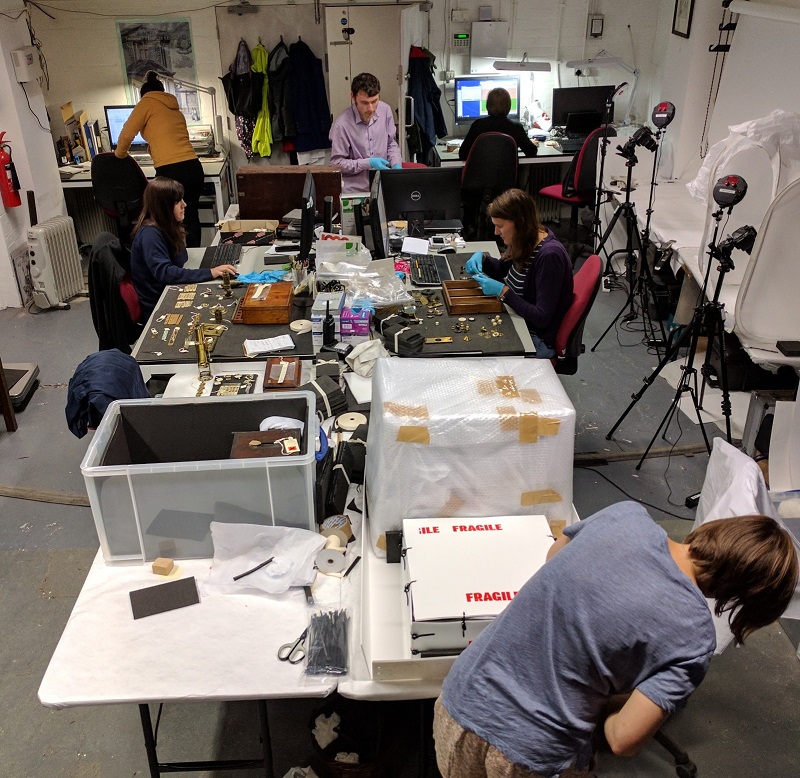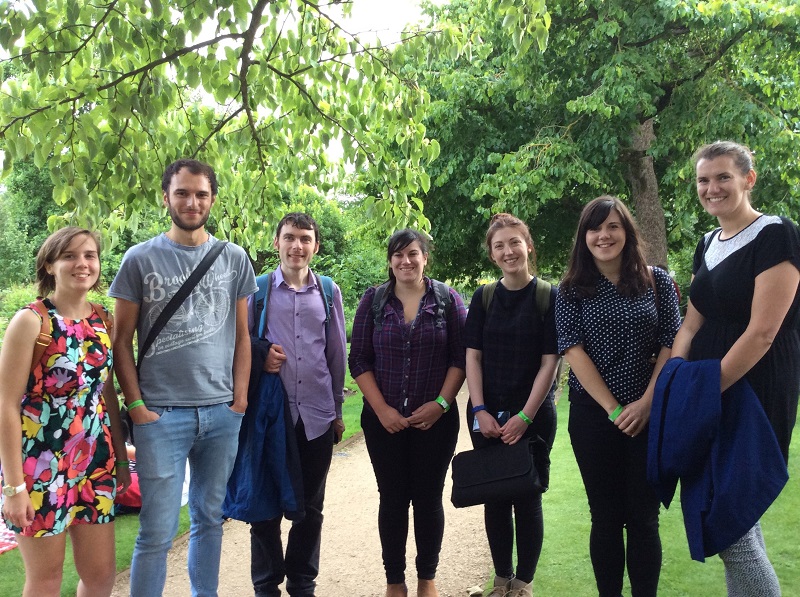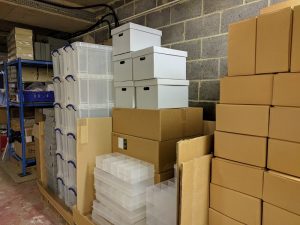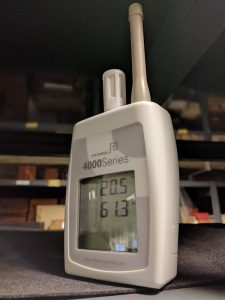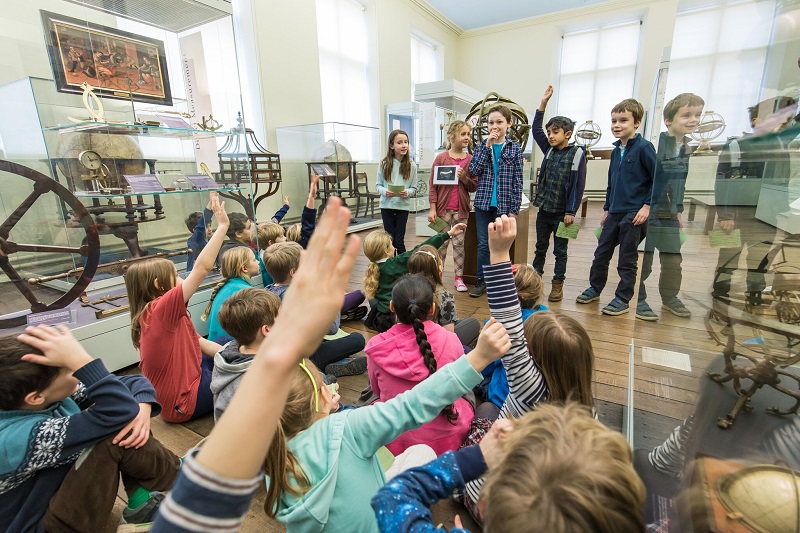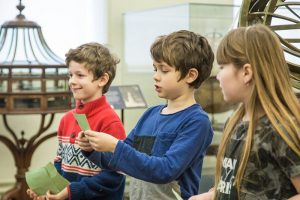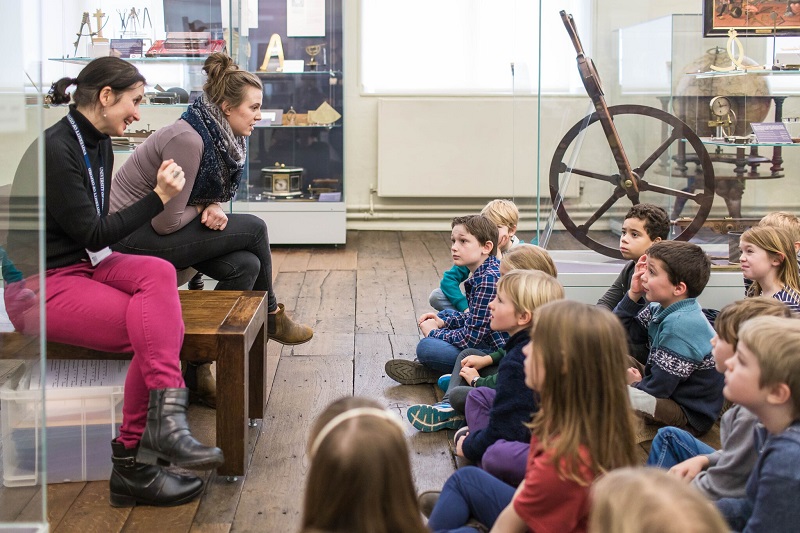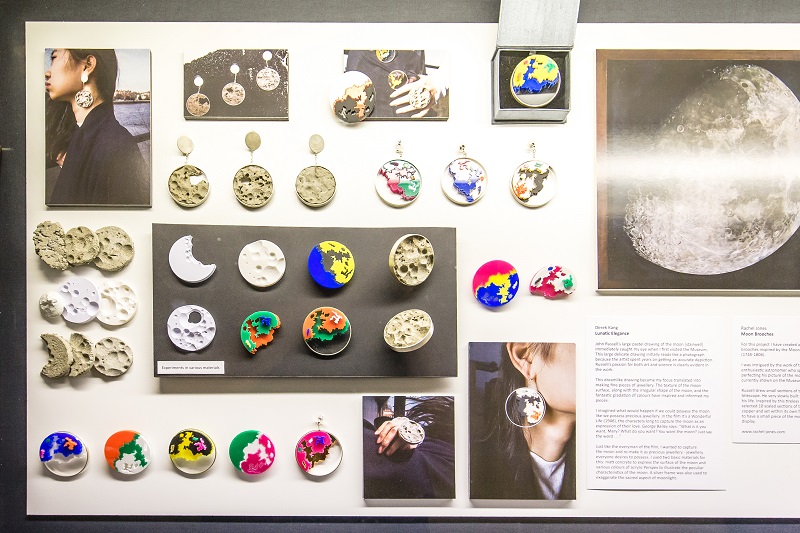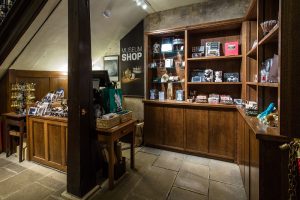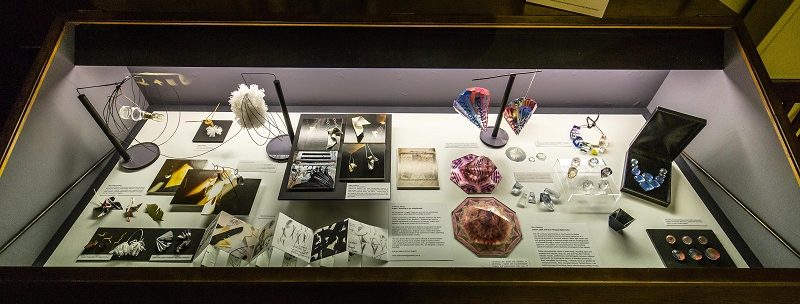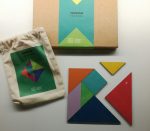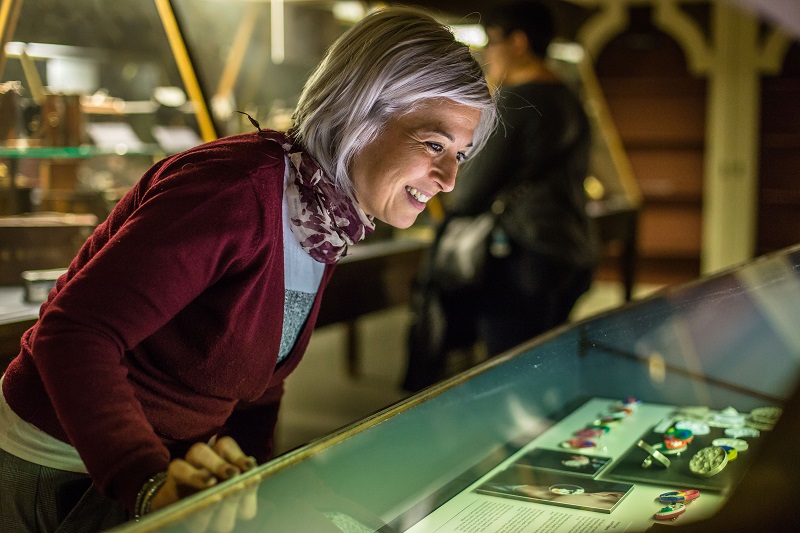One Year On: A Move Project Team Update
Janine Fox, from the Museum’s Move Project Team, gives an update on the MHS Move Project one year after it began.
**
The MHS Move Project commenced just over one year ago and time has flown by! We have packed one out of three collection stores and a third of the second. The Move Project Team has so far audited and packed 17,000 individual items in the collection.
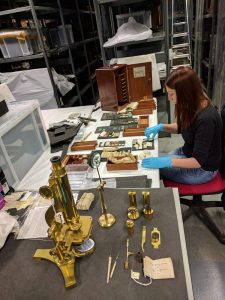 The Museum documentation takes into consideration the difference between the number of ‘items’ and number of ‘objects’. For example, a Compound Microscope, Accessories and Case by J. B. Dancer, Manchester, c. 1860 (inv. 52173), is considered as one object, but it physically comprises over 350 individual items to audit and make safe ready to be moved.
The Museum documentation takes into consideration the difference between the number of ‘items’ and number of ‘objects’. For example, a Compound Microscope, Accessories and Case by J. B. Dancer, Manchester, c. 1860 (inv. 52173), is considered as one object, but it physically comprises over 350 individual items to audit and make safe ready to be moved.
The Move Project Team has grown and we now have six Project Assistants; Annie, Janine, Rose, Martin, Jack and Rowena, and Team Leader Lucy. We also have a number of volunteers that help us with the photography and documentation. Volunteers donate anywhere between 2 hours and 2 days a week to the project and we could not have achieved what we have without their commitment.
The current store room has approximately 20-25,000 items. The Move Project Team are currently working on microscopes, optical instruments, cameras, glass plates and negatives. The current store is quite compact compared to the previous one, so we have had to carefully organise the working space for both computer and practical work. The Project Assistants work in pairs. One Assistant audits the objects whilst the other cleans, prepares and packs the objects. A good radio station and swapping over tasks regularly is a must as inventorying can be very repetitive! However, the opportunity to work with one of the most comprehensive microscope collections in the world means that the Move Team are developing a fantastic breadth of knowledge on this amazing collection.
We require a huge amount of packing materials for so many objects. The basic materials we are using are boxes, corrugated plastic, inert foam and tissue paper. This requires a lot of space and the Move Team have created areas for the storage and cutting of such materials.
It is currently summertime and the stores are a cool relief from some of the warm days we have had this year. The rooms are not air conditioned, but the nature of the building means they stay cool, all we need to do is maintain the relative humidity levels to ensure the collection is not at risk from a fluctuating environment. We use de-humidifiers in the stores to reduce the moisture and have to empty these frequently. We monitor the humidity to ensure we keep the levels within an acceptable band – this usually means between 35 – 65% for a building of this type.
The physical move of the collection is planned for 2018 and we still have a lot of objects in store to audit and pack. We will continue to post updates of the MHS Move Project on Inside MHS. Follow us to see what we get up to. You can also find us on Instagram and Twitter using #mhsmoveteam and #mhsstores.
